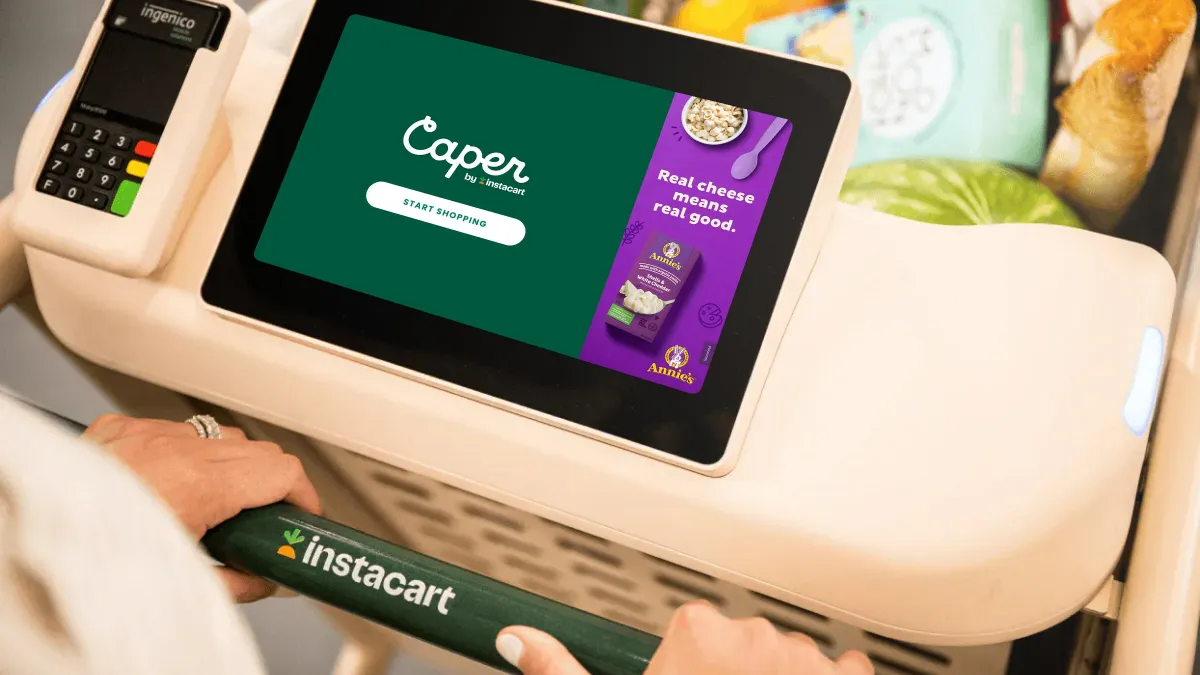When the pandemic took hold in the U.S. in March, retailers across the country scrambled to expand their nascent online platforms as customers shifted their shopping habits. For Foxtrot Market, responding to the outbreak meant returning to its roots.
The company that now operates 10 upscale convenience stores in two cities started out as an online retailer back in 2013 — two years before it built its first store in Chicago. That digital savvy helped Foxtrot quickly switch gears and capitalize on some unique assets during COVID-19, like its own delivery fleet and an inventory system that tracks product across stores and online in real time.
Before the pandemic hit, delivery was already half of Foxtrot’s revenue, CEO Mike LaVitola said in an interview. The company sells around 800 SKUs per store and offers a mix of fresh-made meals, packaged goods and gifts that are often locally sourced.
“We were set up really well in terms of systems because [e-commerce] is a core part of our business,” LaVitola said.
Which isn’t to say Foxtrot was operating totally in its comfort zone. It quickly had to roll out an in-store pickup program it had sitting on the back-burner. It also had to retool its stores, which are small but have areas dedicated to activities like lounging and dining that had to shut down. Those spaces transitioned over to shelving for packaged products, including grab-and-go meals, while store baristas and other employees were retrained to pack up online orders.
Foxtrot stores also shifted its entire café menu online for pickup and delivery, including specialties like avocado toast, salads and smoothies. Stores previously offered a limited assortment of meal options for delivery.
“We really focused on pivoting our ops to even more of a traditional grocer than we planned,” LaVitola said.
Store traffic has ticked back up recently and some of its former experiences, like outdoor seating, have returned. That’s allowed the company, which raised $17 million in February and says it doubled its year-over-year revenue between January and May, to turn its attention back to expansion. Later this year, Foxtrot will open two stores in Washington, D.C. It also recently opened its eighth store in Chicago and is planning to open more stores in Dallas, where it currently has two locations that opened last year.
LaVitola said Foxtrot paused new store lease negotiations during the height of the pandemic, but recently resumed those talks. He said Foxtrot is focused on moving carefully into new markets — it surveyed D.C. for two years before picking its first site — and then quickly building up density once it lands, with an eye toward expanding its delivery service.
“We really look primarily for delivery interest wherever we go, and what we often find is that those delivery customers will look for the retail stores,” he said.
Frank Beard, a convenience store analyst who visited Foxtrot locations in Chicago before the outbreak, said the company's omnichannel strength is an asset, particularly as online adoption has grown during the pandemic. He said the company's “craveable” food menu, unique items and lounging areas make the stores a destination for shoppers.
Beard said he could see Foxtrot expanding to cities like Boston; Portland, Oregon; and Austin, Texas in the future.
“They had some fun gifts and cards specific to Chicago that really added to the discovery factor in the store,” he said.
However, Beard said he found many items were too expensive, like a 9-ounce bag of gummy candies for $6 and a body wash he found at a nearby Target for around $2 less. “Everything in general that they had just struck me as very expensive,” he said.
Foxtrot plants its stores in affluent neighborhoods, but high prices could still deter regular trips when stacked against conventional c-store competitors, grocers and new concepts like Amazon Go and Go Grocery. When asked about the expansion of the Go formats, LaVitola said Foxtrot stores offer a completely different experience and assortment.
“We have stores in Chicago that are directly across the street from Amazon Go stores, and I think it’s a pretty different use case,” he said.
More and more companies are chasing after young, affluent city-goers and suburbanites with small stores these days, including Giant Heirloom Market, Green Zebra Grocery and Hy-Vee’s Fast & Fresh locations. Convenience-store companies, meanwhile, are freshening up their menus, adding groceries and targeting fill-in trips online, blurring the lines between the two channels, said Beard.
Delivery company DoorDash just launched its own online convenience store, DashMart, in eight cities, including Dallas and Chicago. The service offers delivery in about 30 minutes on around 2,000 products, including snacks, beverages and fresh meals.
LaVitola said he’s watching the competition evolved, but remains confident in Foxtrot’s ability to reach shoppers online and offline.
“Fortunately it’s a giant industry,” he said. “People need to innovate up and down the value chain, and we’re really comfortable with where we’re at.”





















